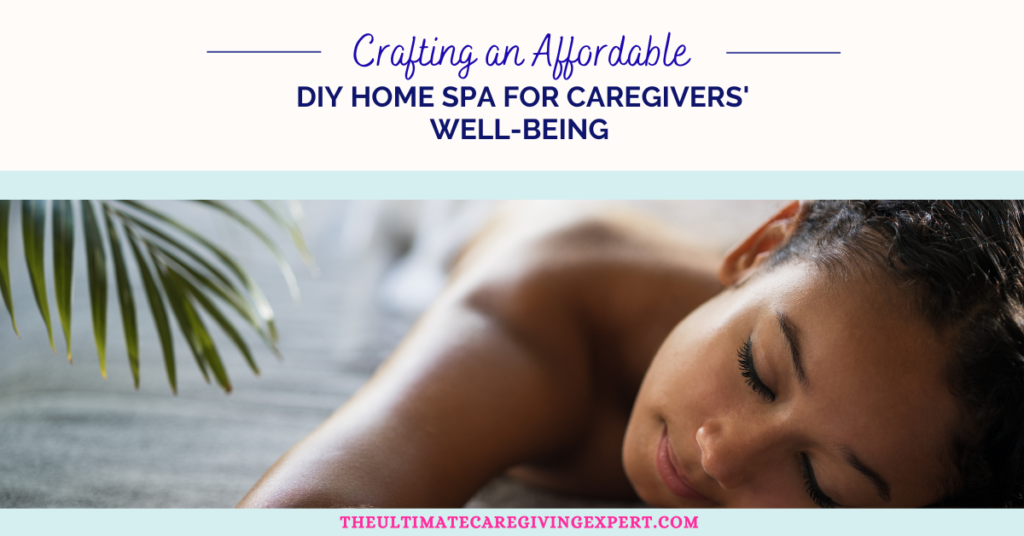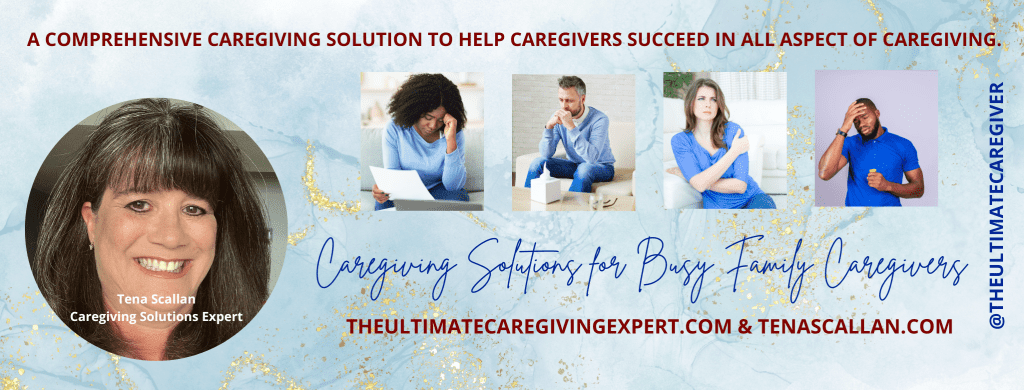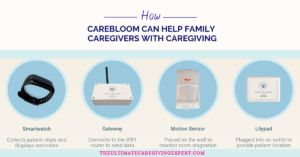Creating Tranquility During Caregiving Challenges
Caring for others can be immensely rewarding, but it can also be physically and emotionally draining. As caregivers, it’s crucial to carve out time for self-care and relaxation. One way to achieve this is by transforming a corner of your home into an affordable spa retreat. By incorporating homemade beauty treatments, soothing scents, and calming ambiance, you can create a sanctuary where you can recharge and rejuvenate. Let’s explore how to craft a Spa for Caregivers without breaking the bank.
-
Recognize the importance of self-care amidst the demands of caregiving
Caregiving often entails putting the needs of others before one’s own, leading to neglect of personal well-being. This paragraph emphasizes the critical need for caregivers to prioritize self-care despite their demanding responsibilities. By acknowledging the importance of self-care, caregivers can begin to understand the necessity of incorporating activities like creating a home spa into their routine to maintain their physical, mental, and emotional health.
-
Introduce the concept of a DIY home spa as an accessible solution
Many caregivers may feel overwhelmed by the idea of self-care, assuming it requires significant time and financial resources. Introducing the concept of a DIY home spa shifts this perspective by presenting it as an accessible and achievable solution. By emphasizing that a home spa can be created with simple and affordable resources, caregivers are encouraged to explore this self-care option as a feasible way to prioritize their well-being amidst their caregiving duties.
-
Emphasize the need for a designated space conducive to relaxation
Creating a relaxing environment is essential for maximizing the benefits of self-care activities like a home spa. This paragraph stresses the importance of having a designated space within the home specifically dedicated to relaxation. By highlighting the significance of factors such as comfort, privacy, and tranquility, caregivers are encouraged to carefully select an area in their home where they can escape the stresses of caregiving and fully immerse themselves in rejuvenating self-care practices.
Choosing the Perfect Space: Finding Serenity in Your Home
Begin by selecting a corner of your home that can be dedicated to your spa retreat. This could be a cozy nook in your bedroom, a quiet corner of the living room, or even a small area in the bathroom. The key is to choose a space where you feel comfortable and can easily unwind. Consider adding elements like soft lighting, comfortable seating, and a small table to hold your spa essentials. Creating a serene environment is essential for maximizing relaxation and promoting well-being.
-
Identify suitable areas in the home for a spa retreat
Identifying suitable areas in the home for a spa retreat involves considering various factors to ensure optimal relaxation and comfort. Firstly, assess the layout and ambiance of different spaces, such as spare rooms, cozy corners in the bedroom, or even secluded spots in the backyard, weather permitting. Once you’ve identified potential locations, carefully weigh the pros and cons of each option. Additionally, consider practicalities like access to water for foot soaks and proximity to power outlets for aromatherapy diffusers. Ultimately, the goal is to find a space that offers tranquility and privacy, where caregivers can escape the demands of their responsibilities and indulge in much-needed self-care.
-
Suggestions for creating a serene environment with minimal resources
Suggestions for creating a serene environment with minimal resources revolve around simplicity and creativity. Firstly, utilize what you already have by rearranging furniture to create a cozy nook or clearing clutter to open up space. Next, leverage natural elements such as sunlight by positioning seating near windows or incorporating indoor plants to bring a touch of greenery. Consider using soft, neutral colors on walls or adding inexpensive textiles like throw pillows or blankets to enhance comfort and coziness. Furthermore, dimmable lighting or candles can set a relaxing ambiance without the need for expensive fixtures. Finally, don’t underestimate the power of sound; playing calming music or nature sounds through a smartphone or portable speaker can further enhance the serenity of your environment. With these simple strategies, caregivers can transform any space into a peaceful retreat for much-needed relaxation.
-
Importance of comfort and personal preference in space selection
The importance of comfort and personal preference in space selection cannot be overstated when creating a home spa retreat. Caregivers often face high levels of stress and exhaustion, making it crucial to prioritize their well-being in every aspect, including the environment in which they relax. Comfort plays a pivotal role in allowing caregivers to fully unwind and recharge, as discomfort can detract from the relaxation experience. Additionally, personal preference ensures that the space aligns with individual tastes and needs, promoting a sense of ownership and comfort. Whether it’s selecting a favorite corner of the home or incorporating preferred decor and furnishings, catering to personal preferences enhances the overall enjoyment and effectiveness of the spa retreat. By prioritizing comfort and personal preference in space selection, caregivers can create a sanctuary that truly nurtures their physical, mental, and emotional well-being.
Setting the Mood: Infusing Tranquility with Soothing Scents
Scent plays a significant role in creating a relaxing atmosphere. Choose essential oils or scented candles with calming fragrances such as lavender, chamomile, or eucalyptus. Place them strategically around your spa space to fill the air with soothing aromas. Consider investing in a small diffuser to disperse the scents evenly throughout the room. The gentle aroma will help melt away stress and promote a sense of calmness, essential for any Spa for Caregivers.
-
Exploring the benefits of using essential oils or scented candles
Using essential oils or scented candles in a home spa offers numerous benefits for caregivers. These aromatic elements have long been praised for their ability to promote relaxation and reduce stress. Essential oils, derived from plants, provide natural and holistic wellness benefits, while scented candles offer a convenient way to infuse spaces with soothing aromas. Both options allow caregivers to customize their spa experience according to their preferences, contributing to a tranquil ambiance and promoting feelings of well-being and relaxation.
-
Tips for strategically placing scented items to enhance relaxation
Strategically placing scented items enhances relaxation in a home spa. Position diffusers or candles near seating areas for easy enjoyment. Ensure even distribution by placing them at eye level or near air vents. For immersion, position scents near points of focus like reading nooks or relaxation stations. Adjust placement based on scent potency to avoid overwhelming the senses. By placing scented items strategically, caregivers can create a spa environment conducive to relaxation.
-
Introducing the idea of a diffuser for even scent distribution
Diffusers disperse essential oils evenly throughout the space, ensuring a consistent and subtle aroma. Simply add water and a few drops of your preferred essential oil to the diffuser, and let it work its magic. Place the diffuser in a central location to maximize coverage, allowing caregivers to enjoy the relaxing scent from anywhere in the room. With a diffuser, caregivers can create a soothing atmosphere conducive to relaxation and well-being in their home spa.
DIY Beauty Treatments: Pampering Yourself with Natural Ingredients
One of the joys of creating a DIY home spa is the opportunity to indulge in homemade beauty treatments using natural ingredients. Whip up a nourishing face mask using ingredients like honey, yogurt, and avocado. Exfoliate your skin with a homemade sugar scrub made from coconut oil and brown sugar. Treat your tired feet to a luxurious foot soak with Epsom salts and peppermint essential oil. Not only are these treatments affordable, but they’re also free from harsh chemicals, making them perfect for sensitive skin.
-
Offering homemade beauty treatment ideas using common household items
Try creating a nourishing face mask using ingredients like honey, yogurt, and avocado. For a gentle exfoliation, whip up a sugar scrub with coconut oil and brown sugar. Treat your tired feet to a luxurious soak with Epsom salts and peppermint essential oil. These DIY treatments are not only affordable but also free from harsh chemicals, making them perfect for caregivers looking to
-
Emphasizing the affordability and simplicity of DIY treatments
These homemade remedies utilize readily available ingredients found in most households, minimizing the need for expensive products or specialized equipment. With just a few common items, caregivers can create effective beauty treatments that rival those found in high-end spas. Additionally, DIY treatments offer the flexibility to customize formulas to suit individual preferences and skin types, further enhancing their appeal. By highlighting their affordability and simplicity, caregivers are encouraged to prioritize self-care without financial strain, fostering a sense of empowerment and well-being.
-
Highlighting the suitability of natural ingredients for sensitive skin
Unlike commercial products that may contain harsh chemicals and irritants, natural ingredients offer a milder and more soothing alternative. For caregivers with sensitive skin, this is particularly beneficial as it reduces the risk of adverse reactions or exacerbating existing skin concerns. Ingredients like honey, oatmeal, and aloe vera possess anti-inflammatory and moisturizing properties, making them ideal choices for calming and hydrating sensitive skin. By using natural ingredients, caregivers can indulge in self-care without compromising on skin health, fostering a sense of comfort and confidence in their home spa experience.
Creating a Relaxing Ambiance: Enhancing Your Spa Experience
Enhance the ambiance of your home spa by incorporating elements that appeal to your senses. Play soft, soothing music in the background to help quiet the mind and promote relaxation. Hang sheer curtains or drapes to create a sense of privacy and intimacy. Consider adding touches of nature, such as potted plants or fresh flowers, to bring a bit of the outdoors inside. By engaging all of your senses, you can create a truly immersive spa experience that melts away stress and tension.
-
Suggestions for background music choices to promote relaxation
Opt for instrumental music genres such as classical, ambient, or nature sounds, as they tend to have a calming effect on the mind and body. Pieces with slow tempos and gentle melodies help induce a state of relaxation and reduce stress levels. Consider compiling a playlist of tracks specifically curated for relaxation, or explore streaming services that offer pre-made relaxation playlists. Alternatively, nature sounds like ocean waves, rainforest ambience, or chirping birds can transport caregivers to a tranquil outdoor setting, further enhancing the spa experience. By selecting the right background music, caregivers can create a serene ambiance that promotes relaxation and well-being in their home spa.
-
Tips for using curtains or drapes to enhance privacy and intimacy
Firstly, opt for thick, opaque curtains or drapes that effectively block out external light and noise, fostering a sense of privacy and seclusion. Choose a color scheme that complements the spa’s aesthetic and promotes relaxation, such as calming blues or earthy neutrals. Install curtains or drapes on sturdy rods or tracks to ensure they can be easily opened and closed as needed. Consider layering sheer curtains behind thicker ones to allow natural light to filter through while maintaining privacy. Finally, add decorative tiebacks or tassels to enhance the visual appeal and create a cozy atmosphere. By using curtains or drapes strategically, caregivers can transform their home spa into a private sanctuary where they can fully unwind and rejuvenate in peace.
-
Incorporating elements of nature for a more immersive experience
Start by introducing potted plants or fresh flowers, which not only add visual appeal but also purify the air and create a sense of tranquility. Choose varieties known for their calming properties, such as lavender or jasmine, to further enhance the spa atmosphere. Additionally, consider incorporating natural materials like wood, stone, or bamboo in furnishings and decor to evoke a sense of grounding and serenity. Enhance the auditory experience by playing nature sounds like flowing water, birdsong, or gentle rain, either through speakers or by opening a window if possible. Finally, maximize natural light by positioning the spa area near windows or skylights, allowing caregivers to bask in the soothing glow of sunlight during their spa sessions. By incorporating these elements of nature, caregivers can create a home spa retreat that nurtures the mind, body, and soul, promoting holistic well-being and relaxation.
Transitioning Back to Reality: Carrying the Spa Experience Forward
As your spa session comes to an end, take a few moments to savor the feeling of relaxation and well-being that you’ve cultivated. Slowly transition back to reality by sipping on a cup of herbal tea or infused water. Take note of how you feel physically, mentally, and emotionally after your spa experience. Incorporate small self-care rituals into your daily routine to help maintain that sense of balance and tranquility. Remember, caring for yourself is just as important as caring for others, and by prioritizing your well-being, you’ll be better equipped to handle the challenges of caregiving with grace and resilience.
-
Encourage mindfulness and reflection at the end of the spa session
Take a few moments to pause and center yourself, focusing on your breath and allowing any lingering tension to melt away. Reflect on the sensations and emotions experienced during the spa session, acknowledging any feelings of relaxation, rejuvenation, or gratitude. Consider journaling your thoughts and experiences to deepen your connection with the present moment and gain insights into your self-care journey. Express gratitude for the opportunity to prioritize your well-being and acknowledge the importance of self-care in maintaining balance and resilience as a caregiver. By cultivating mindfulness and reflection, caregivers can carry the sense of peace and rejuvenation from their spa session into their daily lives, fostering greater emotional and mental well-being.
-
Suggestions for incorporating self-care rituals into daily routines
Start by carving out dedicated time each day for self-care, even if it’s just a few minutes. Use this time to engage in activities that nurture your physical, mental, and emotional health, such as meditation, journaling, or gentle stretching exercises. Incorporate mindfulness practices into everyday tasks, such as mindful breathing while preparing meals or practicing gratitude before bed. Set boundaries and communicate your self-care needs with others, ensuring that you have the support and space to prioritize your well-being. Finally, remember that self-care is not selfish; it’s necessary for maintaining your health and resilience as a caregiver. By making self-care a priority in your daily routine, you can better manage stress, prevent burnout, and cultivate a greater sense of balance and fulfillment in your life.
-
Emphasize the long-term benefits of prioritizing well-being
By making self-care a priority, caregivers can experience a multitude of positive effects that extend far beyond the present moment. Over time, consistently practicing self-care can lead to reduced stress levels, improved physical health, and enhanced emotional resilience. Prioritizing well-being can also result in increased energy levels, greater mental clarity, and improved relationships with others. Additionally, by taking proactive steps to care for themselves, caregivers can prevent burnout and mitigate the negative effects of chronic stress, leading to a more sustainable and fulfilling caregiving experience. Ultimately, prioritizing well-being is not just about short-term relief; it’s about investing in your long-term health, happiness, and ability to continue providing care with compassion and strength.
Conclusion: Investing in Self-Care for a Brighter Tomorrow
Creating an affordable DIY home spa for caregivers’ well-being is a simple yet effective way to prioritize self-care and relaxation. By transforming a corner of your home into a tranquil retreat, complete with homemade beauty treatments, soothing scents, and calming ambiance, you can recharge and rejuvenate amidst the demands of caregiving. Remember to choose a space that feels comfortable and inviting, infuse the air with calming scents, indulge in DIY beauty treatments, and enhance the ambiance with soft lighting and soothing music. By investing in your well-being, you’ll not only improve your own quality of life but also enhance your ability to provide care for others with compassion and grace.





